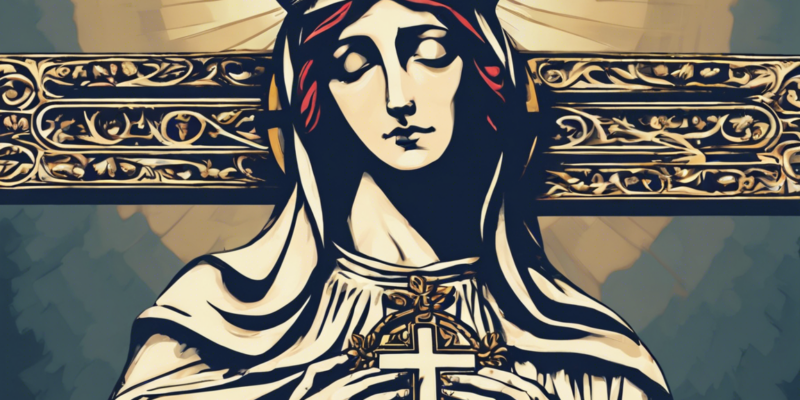Throughout history, the image of Mary on a cross has intrigued and puzzled many individuals. This unique depiction of the Virgin Mary can be found in various forms of art and has sparked numerous interpretations and debates among scholars, theologians, and art enthusiasts. In this article, we will delve into the meaning of Mary on a cross, exploring its origins, symbolism, and significance in Christian iconography.
Origins of Mary on a Cross
The representation of Mary on a cross dates back centuries and can be traced to Byzantine and medieval religious art. One of the earliest known depictions is the Crucifixion scene in the Monastery of St. Catherine on Mount Sinai, which features Mary standing at the foot of the cross alongside other figures such as John the Apostle and Mary Magdalene. This portrayal of Mary in proximity to the crucified Christ served to emphasize her role as the Mother of Sorrows who witnessed the excruciating death of her son.
Symbolism of Mary on a Cross
The visual imagery of Mary on a cross carries deep symbolic meaning within Christian iconography. Here are some key symbols associated with this representation:
1. Suffering and Compassion
Mary on a cross symbolizes her deep suffering, compassion, and unwavering love for her son Jesus. Her presence at the crucifixion demonstrates her willingness to share in the pain and anguish of Christ’s sacrifice for humanity.
2. Redemption and Salvation
By depicting Mary on a cross, artists convey the idea of Mary as a co-redeemer with Christ, participating in the redemption and salvation of humanity through her maternal role. This imagery highlights the profound spiritual connection between Mary and her son in the process of salvation.
3. Intercessory Role
The image of Mary on a cross also underscores her intercessory role as a mediator between humanity and Christ. Through her maternal love and compassion, Mary is believed to advocate for the prayers and petitions of believers, acting as a bridge to her divine son.
Significance of Mary on a Cross
The depiction of Mary on a cross holds significant theological and devotional importance within the Catholic and Orthodox traditions. Here are some aspects that highlight the significance of this imagery:
1. Marian Devotion
For many believers, the image of Mary on a cross serves as a focal point for Marian devotion and piety. Through contemplation of Mary’s presence at the crucifixion, individuals can deepen their spiritual connection with the suffering of Christ and seek solace in Mary’s maternal love.
2. Emotional Resonance
Mary on a cross evokes strong emotions of compassion, empathy, and sorrow in viewers, inviting them to reflect on the profound sacrifice of Christ and the maternal grief of Mary. This emotional resonance reinforces the central themes of redemption, sacrifice, and love in Christian theology.
3. Theological Reflection
From a theological perspective, the representation of Mary on a cross sparks contemplation on the mysteries of the Incarnation, the Crucifixion, and the role of Mary in God’s plan of salvation. It prompts believers to ponder the depths of divine love and the intimate union between Mary and Christ in the drama of redemption.
FAQ:
1. What is the historical origin of depicting Mary on a cross?
The depiction of Mary on a cross can be traced back to Byzantine and medieval religious art, with early examples found in monastic manuscripts and icons.
2. Why is Mary often portrayed at the foot of the cross in Christian art?
Mary is portrayed at the foot of the cross to emphasize her presence and witness to the crucifixion of Christ, highlighting her role as the Mother of Sorrows.
3. What does the image of Mary on a cross symbolize in Christian iconography?
The image of Mary on a cross symbolizes Mary’s suffering, compassion, participation in the redemption of humanity, and her intercessory role as a mediator between believers and Christ.
4. How does the depiction of Mary on a cross impact devotional practices in the Catholic and Orthodox traditions?
The depiction of Mary on a cross serves as a focal point for Marian devotion, emotional reflection, and theological contemplation, deepening believers’ spiritual connection with the mysteries of the faith.
5. What significance does Mary on a cross hold for believers in understanding the role of Mary in Christian theology?
The representation of Mary on a cross highlights Mary’s unique role as a co-redeemer with Christ, her intercessory function, and her profound participation in the mystery of salvation, offering believers a deeper insight into the mystery of God’s love and mercy.



Comments